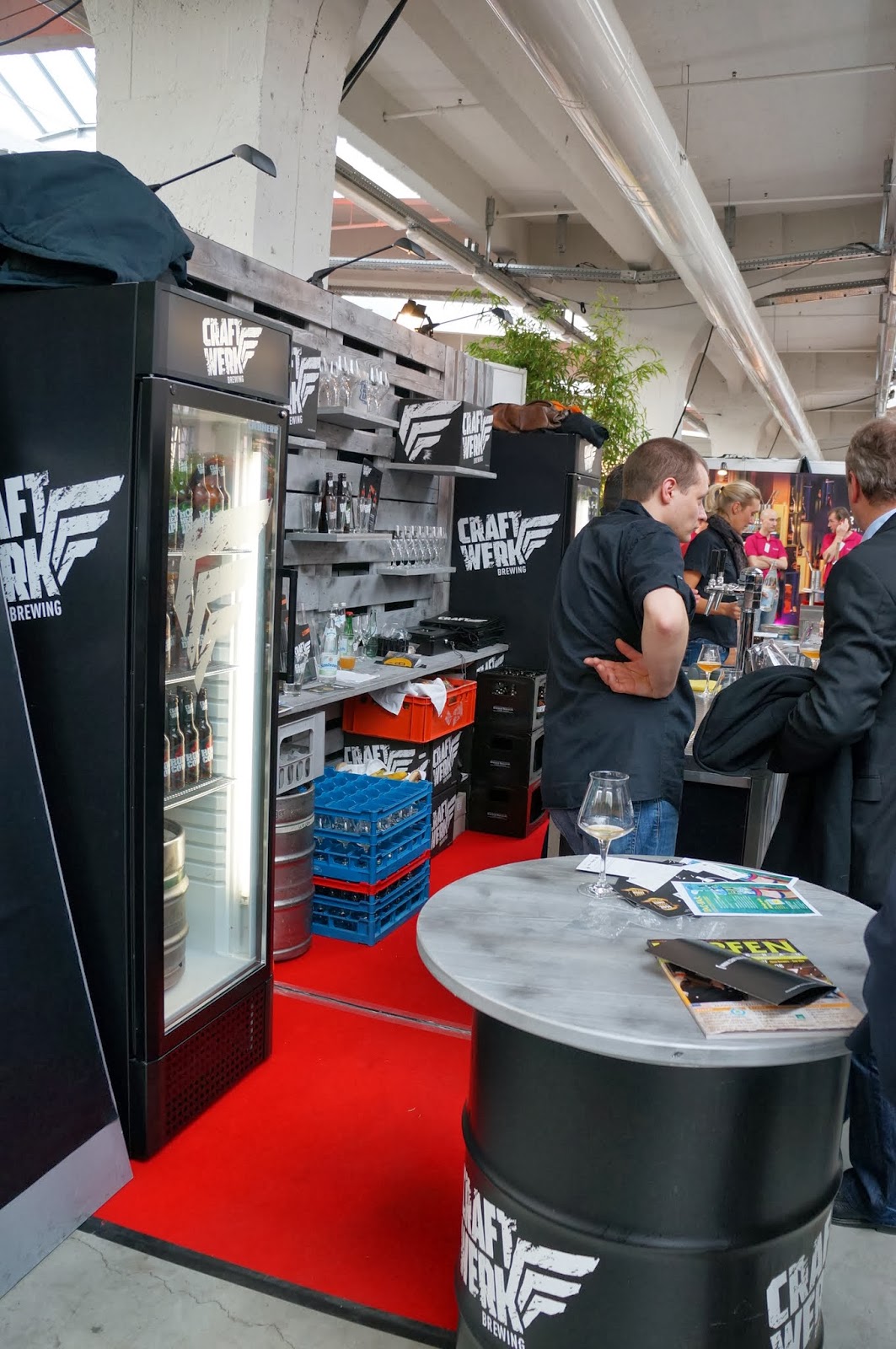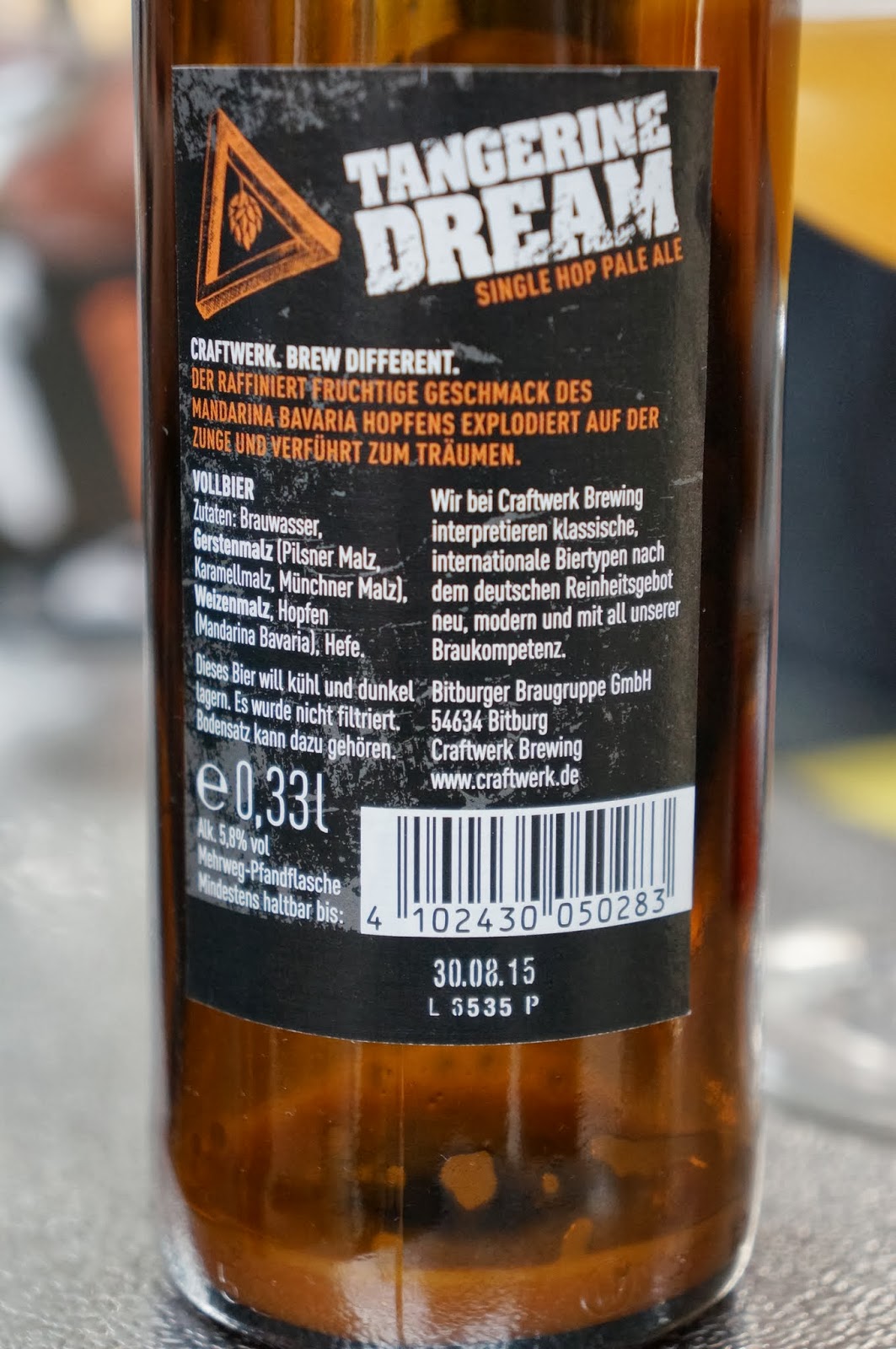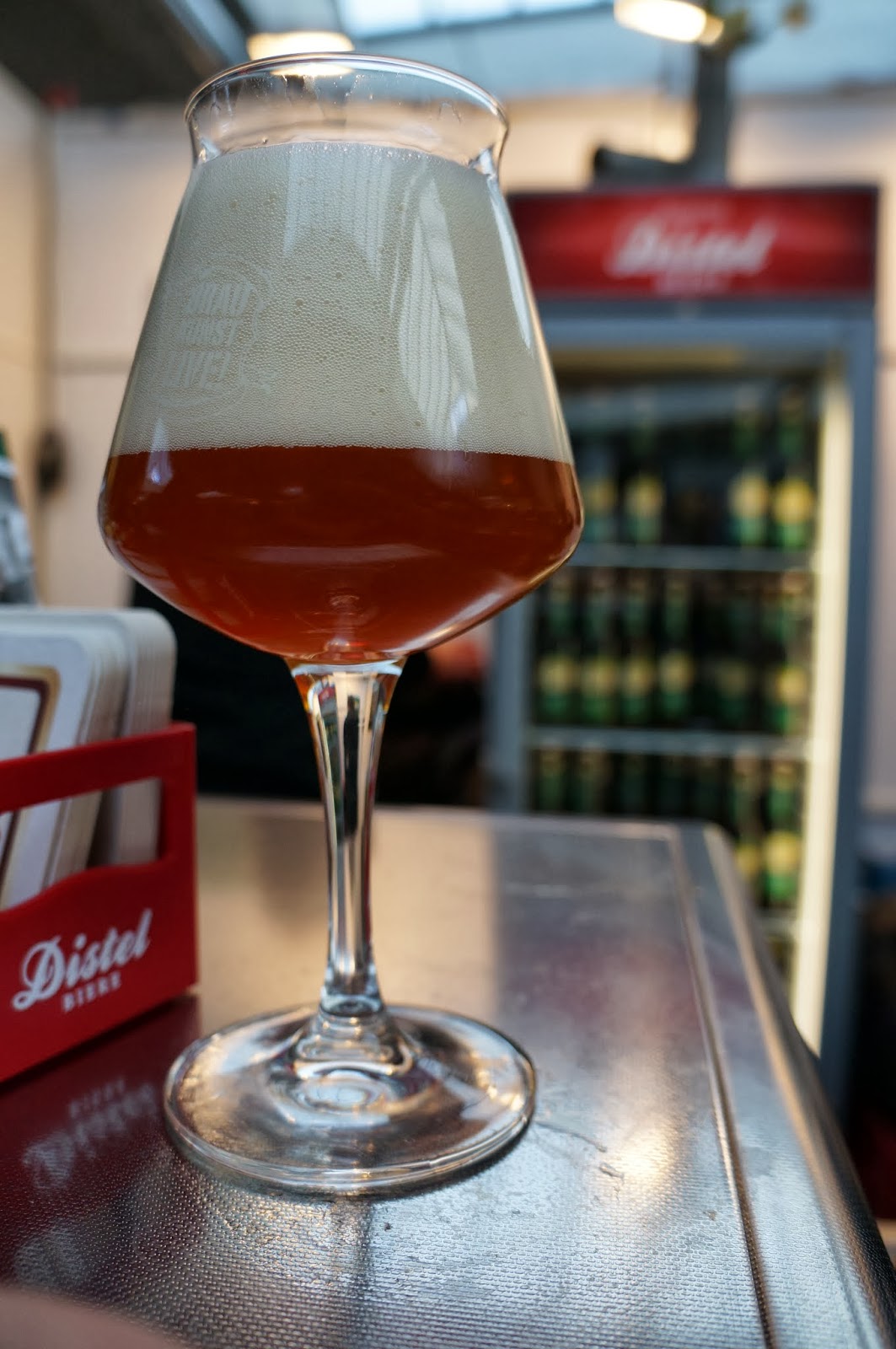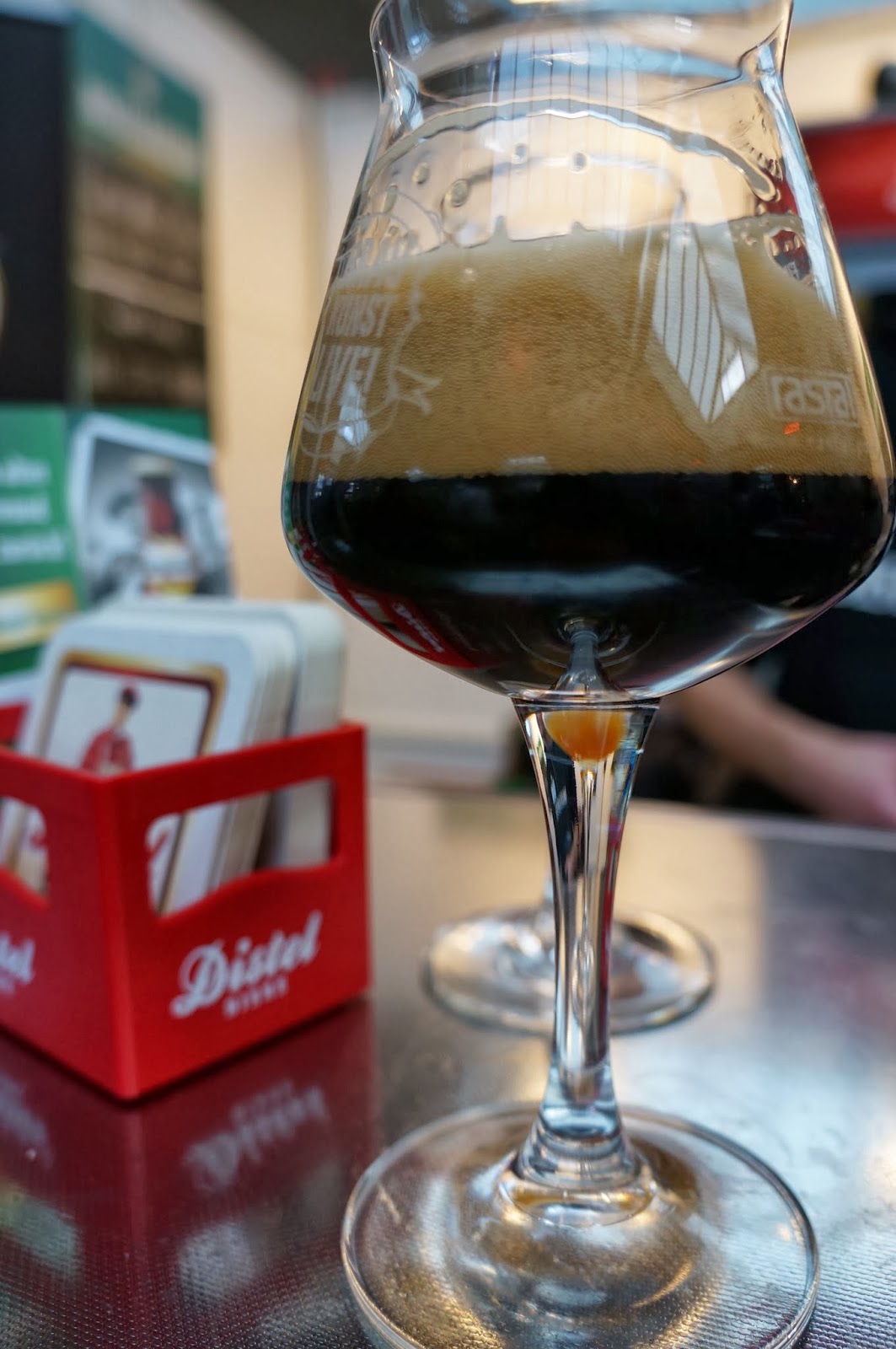The craft versus crafty debate (or in my poor German, above, art or artificial), and the ensuing attempts to define craft, also washed over Germany recently. Or at least for a period. Don't worry, I'm not going to enter that debate now, but what did interest me is how some of the biggest, and indeed some of the more modest sized, private regional brewers, are adapting to the apparent change in tastes amongst a small part of the German beer drinking population. At a time when the number of breweries seems to be increasing, while beer sales are falling, I've noticed in the past few years an increase in the so-called Gourmet beer segment, which to my jaded eye seems like a desperate attempt to get more cash for less product, trying to catch those with more money than sense. Thankfully, most of the smaller brewers producing interesting beers are doing so at reasonable prices, even compared to the wonderfully low prices of perfectly decent table beer in German, which still has me cackling to myself with glee, when I consider beer prices in my native Ireland.
 |
| Braufactum at BKL2014. |
Braukunst Live! 2014 gave me an opportunity to sample from the craft-styled offerings of one of Germany's biggest brewing concerns, as well as some surprise brews from a relatively local, medium-sized brewer.

Bitburger (3.86 million hectolitres in 2008) is one of those breweries I have mixed opinions on. Well, kind of. If it wasn't for them, Köstritzer might have disappeared, but I'm not a big fan of Bit as a beer, and can't say I approve of the
price fixing news from a couple of months ago. Last year, they launched a new range of beers under the
Craftwerk brand, which is based out of their pilot brewery. Given the name, it is almost certainly cashing in on the craft beer trends in Germany, but from what I understand, the brewer here has pretty much complete control over what is brewed, but who can say what the Bitburger marketing machine does after that? But the thing that I have respect for here, is that they are not touting Craftwerk as something
completely separate, as it's very clear on all the printed material and labels that it is a part of Bitburger. Compare that, for example, to Braufactum, owned by the Radeberger Group, which in turn is owned by the behemoth Dr. Oetker. There is zero mention if its provenance anywhere obvious. The only giveaway on their website is if you look up the business address, which is shared by Radeberger. That's not to say that Braufactum don't do
very tasty, interesting beers, but the lack of transparency is something that, as a beer consumer, I don't like so much. Well, that and the "gourmet" pricing, though one has to say, the marketing and presentation is really beautiful, and why wouldn't it be?
But back to Craftwerk, and their three offerings.
Craftwerk Tangarine Dream is a single hop IPA using Mandarina Bavaria, and bears all the hallmarks of that on the nose (does what it says on the tin). Slightly buttery, with light orange (so tempted to say tangarine) and salty caramel, it's got quite a tart hop bite, verging on aggressive, not helped by a thin, biscuity base. It's fine and fruity, but could benefit from a bit more body to round it out.
 |
| Pretty clear where this came from. |
Craftwerk Hop Head IPA⁷ has quite a list of hops going into the brew. Herkules, Magnum, Taurus, Cascade, Centennial, Chinook and Simcoe. Quite a few of my favourites in there, so looking good on paper. Served on tap, Hop Head is a hazy gold with a pleasing aroma, rich with melon, honey, lime and fresh-cut grass. Fruity and fudgey, with a creamy mouthfeel, it strikes a nice balance , while a warming, spicy hop hit brings up the rear. Long-lingering peppery heat and a pithy bitterness left me thinking they might be on to something good here.
And the last of the three,
Craftwerk Holy Cowl, listed as a Belgian-style tripel (but brewed after the Reinheitsgebot, so none of those evil sugars here). The nose is spicy with cloves, fruity with hints of banana and dried apricots, and a tad yeasty. Most of this comes across in the flavour too, with an added dose of earthy hops. It's very spicy, with a gum-tingling carbonic bite, or perhaps it was an edge of sourness, but it's certainly well-carbonated. I got the impression of it being more like a Weizen Doppelbock, with added zest and spice, not that that's a bad thing!
Overall, not bad efforts, and certainly packing a lot more flavour in than a Bitburger Premium Pils, and at prices like €2.35 for a bottle of the Hop Head IPA, well, more than double the price of a regular beer here, but definitely not breaking the bank.
Having completed that bit of research, it was around to visit Distelhäuser (ca. 190.000 Hectoliters per annum). I'm on the record of having said I was never a fan of Distelhäuser Pils, but quite like their Export, and have always thought of them being fairly traditional. That was until I came across their Blonde and Special in my local, tiny drink store, and came away with two six-packs filled with surprises. I'd also seen they had some porters and IPAs at the Grünen Woche up in Berlin, so my curiosity was killing me, what with them only being a 50km drive from where I live.
Distelhäuser Lucky Hop was served from the tap, a 7.7%, 77 IBU concoction with 5 hop varieties. Dark amber, unfiltered, with a pretty stable foam crowning it. Soft caramel, mandarin, strawberries. Big, hop-forward bitterness, but tempered by a fruity sweetness and soft, creamy carbonation. Quite a good effort!
 |
| Distelhäuser Lucky Hop IPA |
Distelhäuser Loch Ness Stout weighed in at 4.7%. Completely opaque, black as night. On the nose, it's chocolaty, yeasty, toasted rye bread and a suggestion of wood, while on the tongue, it's creamy, fruity with blackberries, a touch of vanilla and wood, with a dark chocolate bitterness rounding it off. I have to admit, it was a lot more than I expected. My views of Distelhäuser were continuing to sway.
 |
| Distelhäuser Loch Ness Stout. I think. |
And finally,
Distelhäuser Black Pearl Porter, a slightly heavier 5.6% with 28 IBUs. This was a surprising fruit bomb. Big berries, and fruity as hell, with vanilla, and a deft touch of sourness cutting a soft toffee maltiness. I've had some god-awful German porters in the past (
Lausitzer, anyone?), and a few really excellent examples, and while this might not check all the BJCP style guide boxes (did I really just type that?), I really enjoyed the surprise of it all, and would happily drink a pint.
I don't know if these Distelhäuser beers are going to be hitting the stores around my area, or if they are just experiments shown at festivals, but I do rather like that they haven't tried to market these under any other label than Distelhäuser or the diminutive Distel. No mention of the C word anywhere, they're just trying stuff out, which I can certainly respect, as in a medium size brewery, that could be seen as a bit risky in some circles (till now, they've brewed local beers for local people, nothing for you here!). I had a nice chat with the manager/brewer, and hope to visit sometime later this year for a closer look, but I certainly hope that I see beers like this in my local drink store.
So, that's a small look at a huge and a medium-sized brewer, doing stuff in my playground. Is it crafty, in the sense the Brewers Association described? On reflection, I'd have to say no, or at least not in these cases. Despite calls for some sort of global definition of what craft is, I think the benchmark varies so widely from country to country, that it's simply not possible, or at least not in any meaningful way. Even the BA seems to be in the habit of changing their own definition to suit their members. In Beoir, we set Irish Craft Beer as something very easily defined, based on volume, place of production and ownership. No mention of passion as an ingredient whatsoever, but then drive is a given with the Irish craft brewers. While Craftwerk might be playing the craft card, at least it completely transparent where the beer is coming from, and as a beer consumer, that's something that I can use to make the right choices for myself.
Next up... hmmm, maybe the Nøgne Ø tasting.








